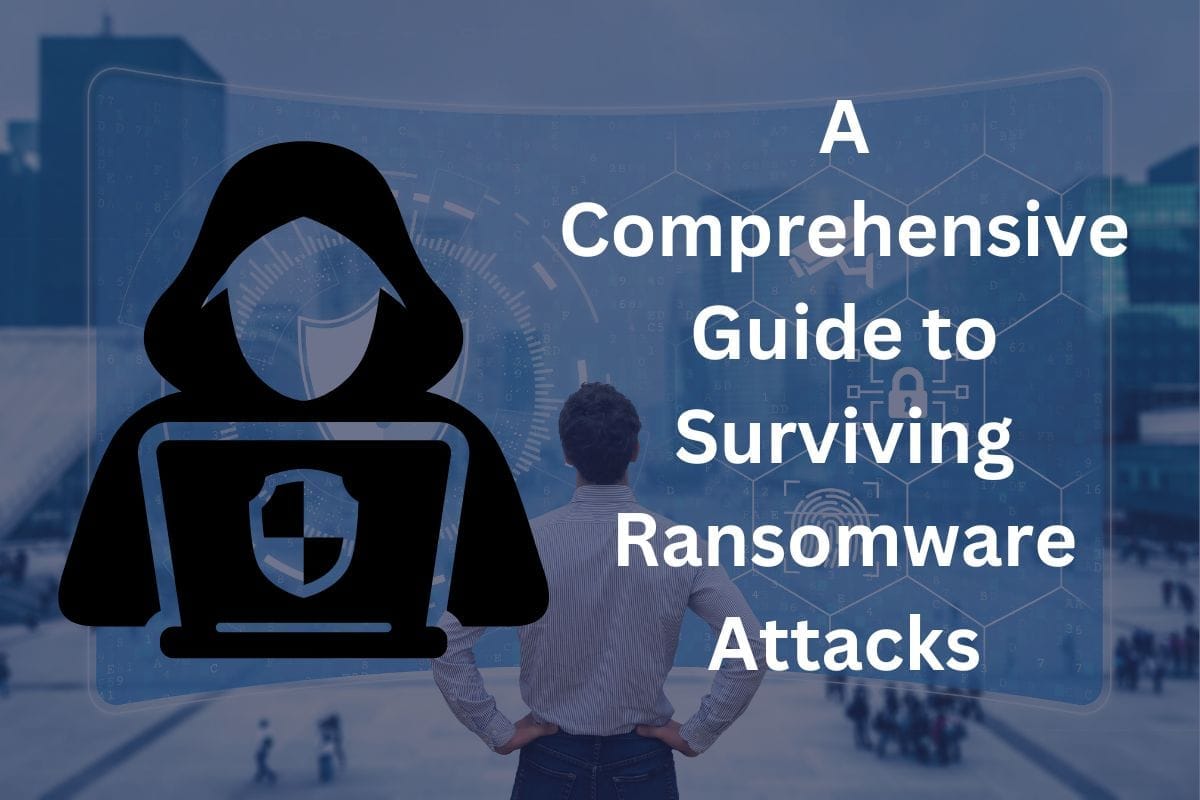

A Comprehensive Guide to Surviving Ransomware Attacks
The rise of digital connectivity has brought immense benefits to society, but it has also introduced new and evolving cyber risks. Among the most destructive threats in recent years is ransomware, a type of attack that encrypts critical files and demands payment for their release. These attacks don’t discriminate—individuals, entrepreneurs, and large organizations alike have found themselves locked out of essential data. The consequences can be devastating, leading to financial losses, reputational damage, and major business disruptions. Recognizing how ransomware works, its potential impact and the steps needed to prevent it is essential in combating this growing threat.
In this article, we’ll provide a comprehensive guide to surviving a ransomware attack, sharing practical steps and strategies to minimize damage and enhance protection.
Prevention is Key
Prevention is the first and most important step in surviving a ransomware attack. You may considerably lower the danger of falling victim to such an attack by establishing strong security measures and following best practices. The following are some vital safety measures to take:
- Keep your software up to date: To make sure you have the most recent security updates and bug fixes, regularly update your operating system, antivirus software, and other apps.
- Use strong passwords: Make unique, difficult passwords for all of your accounts, and think about utilising a password manager to store and manage them securely.
- Enable two-factor authentication (2FA): Use 2FA wherever possible to offer an extra layer of security to your accounts.
- Be cautious with email attachments and links: Open questionable emails with caution and never download files or click on links from unknown sources.
- Regularly back up your data: Back up your crucial files on an external device or in the cloud regularly. Make sure to test the restoration procedure regularly to confirm the backups are working properly.
Recognising a Ransomware Attack
Regardless of your efforts, you can end up a victim of a ransomware attack. Recognising the warning signs early can help you respond quickly and minimise the damage. Watch out for these warning signs:
- Unusual file extensions: Ransomware frequently modifies the file extensions of encrypted files to something unusual or adds a unique extension indicating encryption.
- Ransom notes: Attackers typically leave a ransom note informing you about the attack and providing instructions for payment.
- Locked screens or system alerts: Some ransomware strains lock your screen, making it impossible to access your device or showing threatening messages.
- Slow or unresponsive system: Ransomware can exhaust system resources, causing your machine to be sluggish or stop responding.
Responding to a Ransomware Attack
If you suspect or confirm a ransomware attack, you must act quickly and efficiently. To improve your chances of survival, take the following steps:
- Isolate the infected system: To prevent the ransomware from spreading to other devices, disconnect the affected device from the network as soon as possible.
- Report the incident: Notify your organization’s IT department or local authorities about the situation. This can help track down the attackers and possibly aid in the recovery procedure.
- Do not pay the ransom: While the decision to pay the ransom is ultimately yours, it is generally advised not to pay. Paying the ransom does not guarantee the return of your files, and it can encourage further attacks.
- Consult a professional: Seek the help of a cybersecurity expert to assess the problem, identify the ransomware strain, and investigate viable decryption solutions.
- Rebuild your system: After you’ve handled the immediate difficulties, start over with reliable backups and clean installations. Before restoring your files, update any software and apply essential security patches.
Strengthening Security Post-Attack
A ransomware attack should serve as a wake-up call to update your security. Consider the following precautions to avoid future incidents:
- Train employees: Educate yourself and your employees on the dangers of ransomware and how to identify possible threats. Provide monthly cybersecurity best practices training sessions.
- Improve network security: Implement firewalls, intrusion detection systems, and endpoint protection solutions to improve network security.
- Develop an incident response plan: Create a comprehensive incident response strategy outlining the measures to take for a ransomware attack. To ensure its efficacy, this plan should be tested and updated regularly.
- Encrypt sensitive data: Use encryption techniques to safeguard sensitive data both at rest and in transit. Even if an attacker has access to your data, this provides an additional layer of security.
Conclusion
Surviving an attack with ransomware necessitates a combination of preventive measures, quick action, and a proactive security strategy. You can reduce the effects and protect yourself from future occurrences by installing strong preventive measures, recognising the symptoms of an attack, and responding efficiently. Remember that while prevention is essential, being prepared and aware is also essential in the ever-changing stage of cyber danger. Stay alert and secure.

